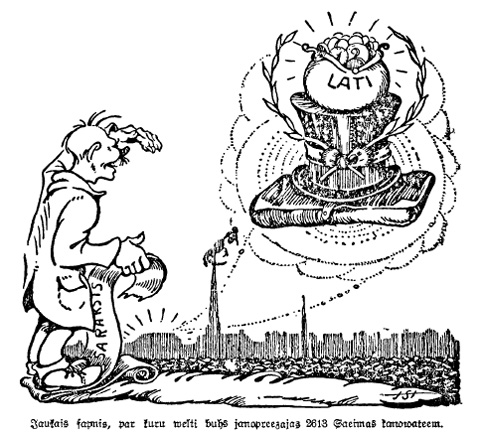Of the 1,090 candidates running in the Sept. 17 parliamentary election in Latvia, a total of 15 hold dual or triple citizenship, according to data compiled by the Central Election Commission. That’s double the number in last year’s election.
Latvian voters will decide Sept. 17 who should fill the 100 seats in the Saeima. In July, they overwhelmingly dissolved the 10th Saeima, which had just been elected in October.
In last year’s election for the 10th Saeima, a total of seven candidates had dual citizenship—and one of those was a triple citizen. The election for the 9th Saeima included six candidates with dual citizenship, according to election commission data.
Latvia’s current citizenship law does not allow new dual citizenship registrations. From 1991 to July 1995, émigrés and their descendants were able to reclaim Latvian citizenship without giving up citizenship in their home countries.
In the campaign for the 11th Saeima, the center-right party Vienotība (Unity) has eight dual citizens running for office. They include five with U.S. citizenship, plus one each with Brazilian, Canadian and Swedish citizenship:
- Jānis Bērziņš holds both Brazilian and Latvian citizenship. He is a lecturer in political science at the Rīga Stradīņš University and a member of the board of SIA Lux Sit, a consulting firm in Rīga.
- Mārcis Gobiņš, a self-employed translator, has both U.S. and Latvian citizenship. He lives in Rīga.
- Rasma Kārkliņa, who was a member of the 10th Saeima, has both U.S. and Latvian citizenship. She lives in Rīga and is lead researcher in political science at the University of Latvia.
- Atis Lejiņš, also a member of the 10th Saeima, lives in Rīga. He holds U.S. and Latvian citizenship. He is honorary director of the Latvian Institute of International Affairs (Latvijas Ārpolitikas institūts).
- Liene Liepiņa, another member of the 10th Saeima, lives in Priekuļi County. Like several other candidates with links to the diaspora, Liepiņa is a graduate of the Münster Latvian Gymnasium (Minsteres latviešu ģimnāzija) in Germany.
- Juris Plēsums, is a retired agronomist who has both U.S. and Latvian citizenship. Plēsums lives in Jaunpiebalga County. He still owns a farm in Wisconsin.
- Mārtiņš Reinis Sausiņš, who in July stepped down as chairman of the World Federation of Free Latvians (Pasaules brīvo latviešu apvienība) to enter politics, holds both Canadian and Latvian citizenship. He lives in Canada’s Québec province.
- Jānis Mārtiņš Zandbergs, a member of the Rīga City Council, holds both U.S. and Latvian citizenship. He was born in Germany.
Ex-president Valdis Zatlers’ new party, the Zatlera Reforma partija (Zatlers’ Reform Party) claims one dual citizen from the United States and two from Germany, as well as one triple citizen:
- Austris Grasis, a well-known member of the diaspora community, holds dual Latvian and German citizenship. He lives in Mazsalaca County and is a member of the board of directors of the Daugavas Vanagi organization of Germany.
- Ivars Jānis Graudiņš lives in Rēzekne County and holds U.S. and Latvian citizenship. He is manager of Latvijas Lūgšanas Nams Visām Tautām, which is a religious project based in Ružina. Graudiņš also own a home in Milwaukee, Wis.
- Valdis Labinskis holds both German and Latvian citizenship. He live in Līvani County and is self-employed.
- Valdis Liepiņš is a triple citizen of Latvia, Canada and the United Kingdom. He lives in Rīga and runs the Latvian affiliate of Baltic Connections Inc.
Three candidates from the conservative National Association “Visu Latvijai!” – “Tēvzemei un Brīvībai/LNNK” have dual citizenship:
- Gunārs Indārs of Littleton, Mass., is co-owner and head of Valley Design Corp., a Shirley, Mass.-based electronics engineering company. He has dual U.S. and Latvian citizenship.
- Valdis Jānis Kursietis holds British and Latvian citizenship and is a self-employed consultant and manager who lives in Rīga.
- Konstantīns Pupurs, who lives in Inčukalns County near Rīga, hold U.S. and Latvian dual citizenship. He works as a lecturer at the Latvian Maritime Academy (Latvijas Jūras akadēmija).
Polls on election day will be open from 7 a.m. to 8 p.m. local time. Outside Latvia, 77 polling stations will operate in 39 countries. Voters also will be able to vote by mail, but need submit applications for absentee ballots by Sept. 2. The Central Election Commission provides details on absentee ballots on its website, www.cvk.lv.




